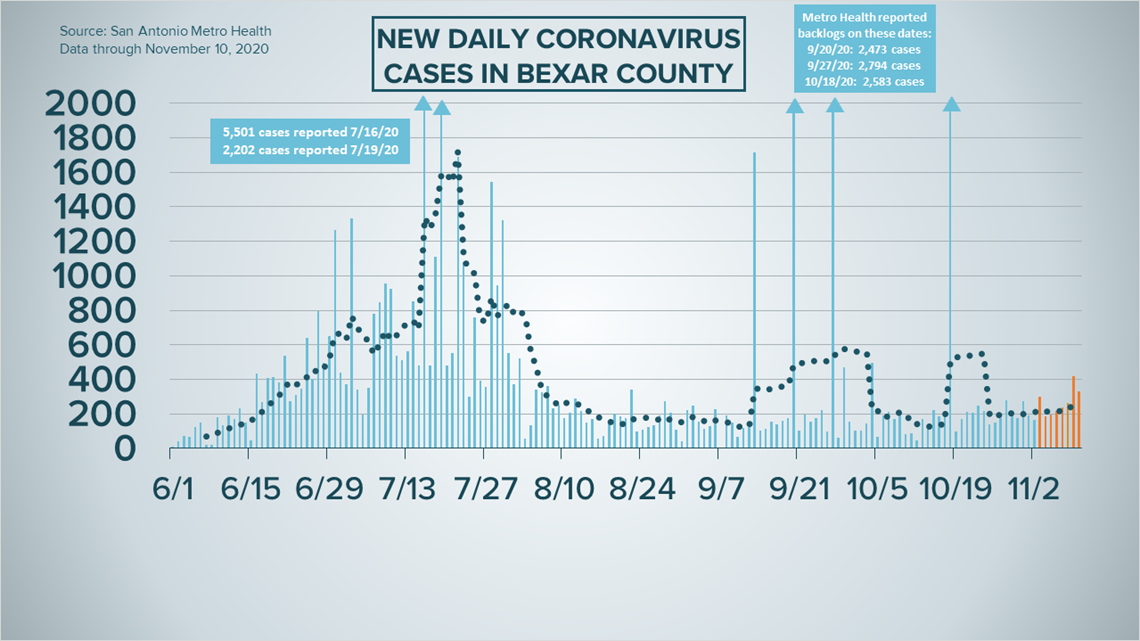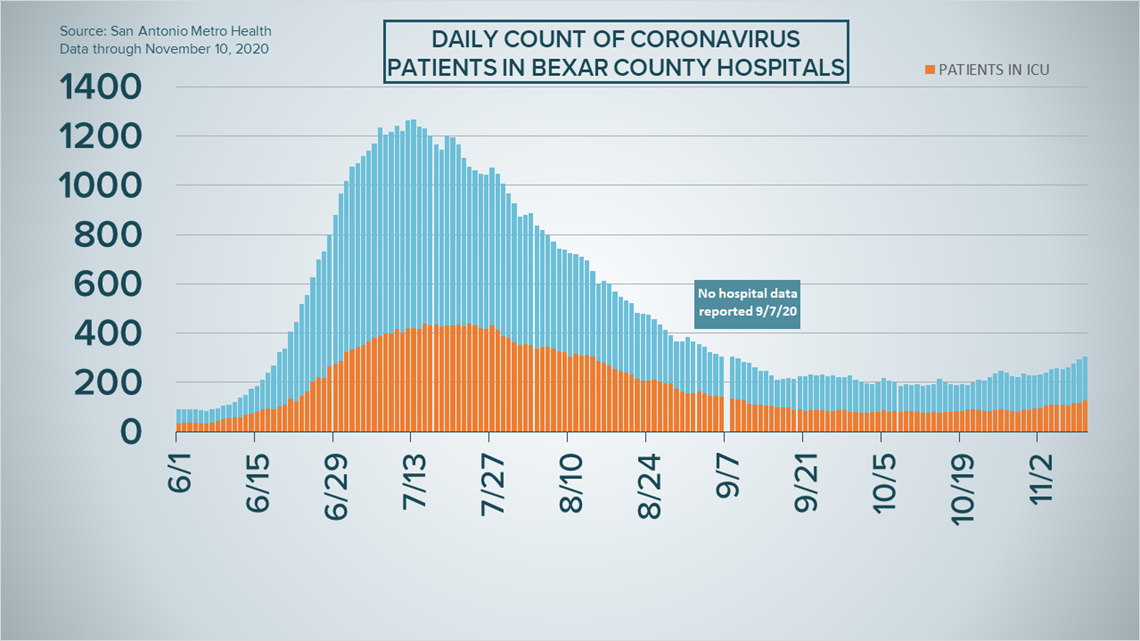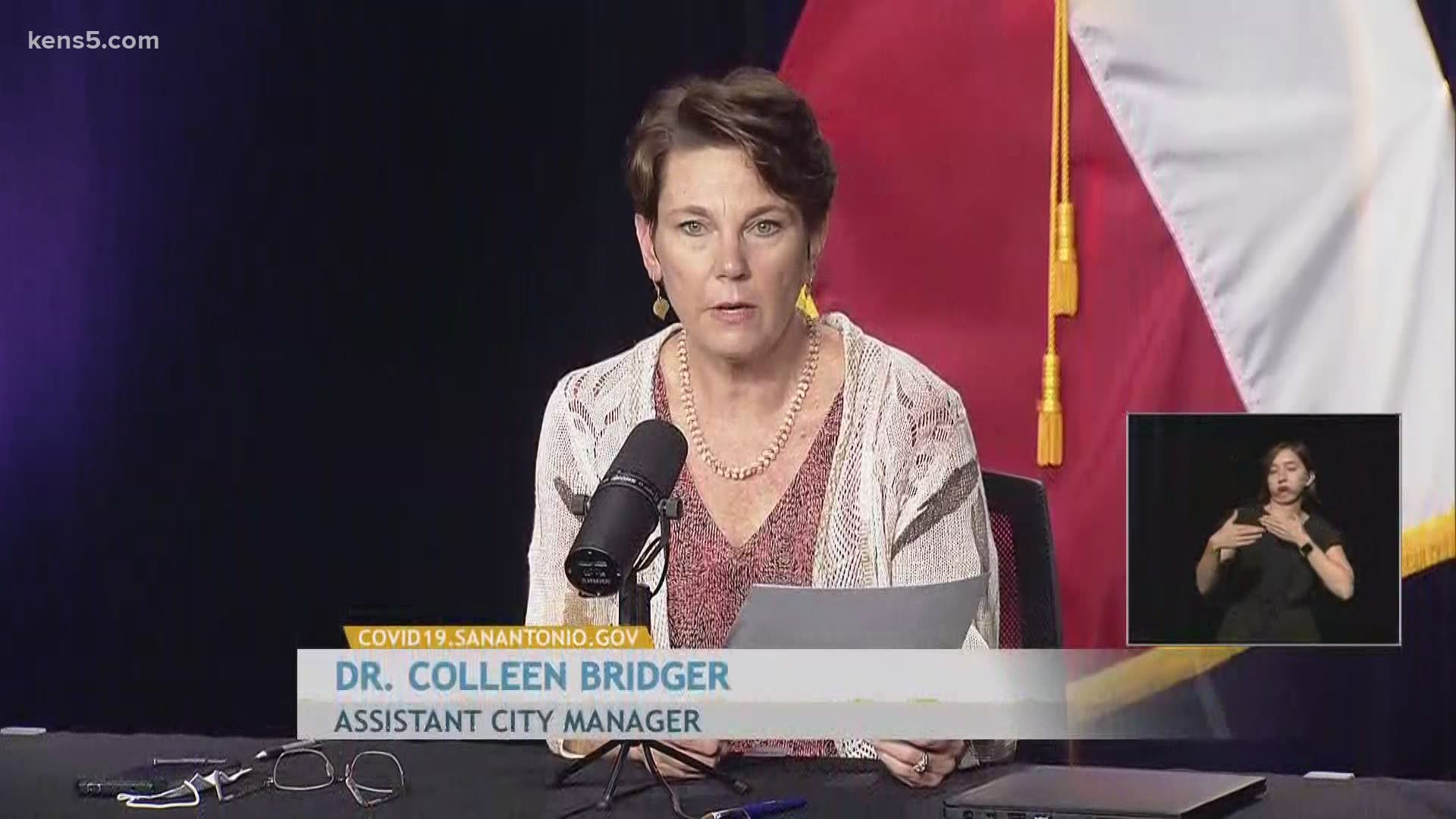SAN ANTONIO — We're tracking the latest numbers from the coronavirus pandemic in San Antonio and across Texas. Here are the latest numbers reported by Bexar and surrounding counties:
- Bexar County: 332 new cases were reported Tuesday, bringing the total number of cases for the county to 68,376. No new deaths were reported; the death toll remains at 1,285.
- Comal County: The county reported 56 new COVID-19 cases Tuesday. One new virus-related death was reported. There have been a total of 3,997 reported cases of COVID-19 in the county – including 2,960 lab-confirmed cases – while 123 county residents have died. County officials say there are 219 active coronavirus cases, and 123 residents are considered recovered.
- Hays County: Officials in Hays County on Tuesday reported 73 new cases in the county and no additional virus-related deaths. As of Tuesday, there are a total of 6,486 lab-confirmed cases in the county (412 of which are active), while the death toll remained at 91. 5,983 residents have recovered from the virus.
How Bexar County is trending
We've tracked how many coronavirus cases have been confirmed in Bexar County from the time officials began reporting cases in March 2020. The graphic below shows the number of cases since June and charts those daily case numbers along a 7-day moving average to provide a more accurate picture of the overall coronavirus case curve in our area and the direction we're trending amid the pandemic.
On Tuesday, San Antonio's Assistant City Manager Dr. Colleen Bridger reported 332 new coronavirus cases in Bexar County. At least 68,376 county residents have been diagnosed with COVID-19 during the pandemic. The county's seven-day moving average has risen to 239
No new local deaths were reported; the Bexar County death toll from coronavirus complications remains at 1,285.


Hospitalizations in the county continued to rise on Tuesday, with 306 COVID-19 patients receiving treatment at local facilities. That's 12 more overall from Monday. There are currently 57 patients on ventilators and 128 in intensive care.


61 of those patients are from El Paso, a region that has been particularly devastated by the virus in recent weeks.
The county's weekly COVID-19 risk level remains in the moderate zone; Nirenberg noted Monday that the positivity rate had risen to 8.7%
Coronavirus in Texas
Wednesday morning, Texas became the first state to surpass one million COVID-19 cases.
According to data from Johns Hopkins University, the nation’s second-most populous state has recorded 1,010,364 coronavirus cases with 19,337 deaths since the pandemic began in early March.
The number of Texans who have tested positive for the coronavirus since the pandemic began grew by 11,211 on Tuesday, according to the Texas Department of State Health Services.
10,865 of those are new diagnoses over the last 24 hours, which is the highest number of new cases reported in a single day in Texas since the pandemic began. Another 346 cases stem from a number of backlogs in several counties. More details can be found at the top of this page.
As of Tuesday, at least 974,230 Texans have contracted COVID-19.


State health authorities also reported 94 additional virus-related deaths on Tuesday. At least 18,863 Texans have passed away from COVID-19 complications.
Meanwhile, the overall number of Texans hospitalized for COVID-19 on Tuesday rose by 67 in the past 24 hours. A total of 6,170 Texas residents are currently receiving COVID-19 treatment in state hospitals. The beginning of November has continued a troubling trend reflecting a resurgence of COVID-19 spread in the Lone Star State that began last month; since Oct. 1, the number of Texas hospitalizations has spiked by 93.4%.
Experts attribute the recent spike in COVID-19 numbers to "pandemic fatigue."
The state estimates that 826,116 Texans have recovered, while 132,146 Texans remain ill with COVID-19.
Meanwhile, the latest update from the Texas Education Agency showed that there have been 31,987 cumulative cases among staff and students across the state through Nov. 1. More information can be found here.
The TEA releases new data on school cases every Thursday.
Latest Coronavirus Headlines
- Mayor Nirenberg self-quarantining after possible COVID-19 exposure, awaiting test results
- It's time to 'dial back' our COVID-19 quarantine bubble, health expert says
- CDC study shows working in the office doubles coronavirus risk, compared to working at home
- Texas A&M-Tennessee, LSU-Alabama postponed due to COVID-19
- Doctors may be better equipped to handle latest coronavirus surge
- Who's Hiring: Companies still looking for employees during coronavirus pandemic
- What are the next steps for Pfizer’s coronavirus vaccine
- Businesses wait for Bexar County lottery drawing for coronavirus relief
- East Texas hospitals add capacity to prepare for additional COVID-19 patients
Coronavirus symptoms
The symptoms of coronavirus can be similar to the flu or a bad cold. Symptoms include fever or chills, cough, shortness of breath or difficulty breathing, fatigue, muscle or body aches, headache, new loss of taste or smell sore throat, congestion or runny nose, nausea or vomiting and diarrhea, according to the Centers for Disease Control.
Most healthy people will have mild symptoms. A study of more than 72,000 patients by the Centers for Disease Control in China showed 80 percent of the cases there were mild.
But infections can cause pneumonia, severe acute respiratory syndrome, kidney failure, and even death, according to the World Health Organization. Older people with underlying health conditions are most at risk.
But infections can cause pneumonia, severe acute respiratory syndrome, kidney failure, and even death, according to the World Health Organization. Older people with underlying health conditions are most at risk.
Experts determined there was consistent evidence these conditions increase a person's risk, regardless of age:
- Chronic kidney disease
- COPD (chronic obstructive pulmonary disease)
- Obesity (BMI of 30 or higher)
- Immunocompromised state (weakened immune system) from solid organ transplant
- Serious heart conditions, such as heart failure, coronary artery disease, or cardiomyopathies
- Sickle cell disease
- Type 2 diabetes
The CDC believes symptoms may appear anywhere from two to 14 days after being exposed.
Human coronaviruses are usually spread...
- Between people who are in close contact with one another (within about 6 feet).
- Through respiratory droplets produced when an infected person coughs, sneezes or talks. These droplets can land in the mouths or noses of people who are nearby or possibly be inhaled into the lungs.
- Some recent studies have suggested that COVID-19 may be spread by people who are not showing symptoms.
Help stop the spread of coronavirus
- Stay home when you are sick.
- Eat and sleep separately from your family members
- Use different utensils and dishes
- Cover your cough or sneeze with your arm, not your hand.
- If you use a tissue, throw it in the trash.

